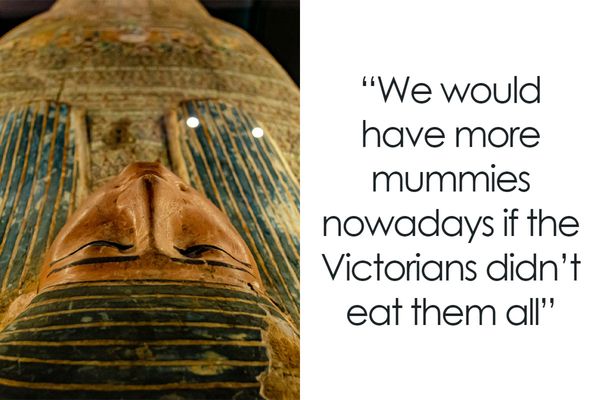This article contains spoilers for Slave Play.
As I joined the long queue outside London’s Noël Coward Theatre for Jeremy O. Harris’s Slave Play, I was greeted by an usher who asked to see my phone. When I produced my mobile, the usher put a sticker over my phone’s camera that said “Starbucks!” (an inside joke from the play, I later discovered). Several times before we took our seats, ushers verified that the stickers on our phones were in place.
Beyond the standard pre-show announcements to silence our phones, the extra precautions are down to the show’s celebrity male nudity. At the play’s denouement, Jim (Kit Harrington) undresses and remains nude for the duration of the performance.
The “Starbucks!” sticker is an effort to physically prevent photography and videos circulating online. But this seemingly innocuous action creates a ripple effect about the meanings created within the production and the social aspect of theatre-going.
Slave Play investigates contemporary interracial relationships, specifically involving African Americans. Couples in the play navigate difficult entanglements of emotions in relation to their power dynamics, sexual politics, desire, control and trauma. The play does not provide any answers or clear message. Rather it pulls at some of the scabs of race relations in the US and confronts the audience with complex, layered provocations on these topics.
Owing to the complexity of the play, choices made in the production can have a substantial impact on how the performance is read by the audience. My work addresses how the nude male body in performance has often not been read in the same way that female bodies have been analysed: in terms of desire.
It also examines how the nude male body in performance has been reviewed favourably in heterosexual contexts and unfavourably in homosexual ones – often by the same reviewer. In the context of Slave Play I am particularly interested in the meanings created by the celebrity male nudity in the final scene.
The first act begins with three interracial couples in what appears to be the antebellum south (pre-civil war America), demonstrating the sexual and power dynamics between black characters and their white (or white-presenting) partners.
Jim is seen ordering enslaved woman Kaneisha (Olivia Washington) to clean the floor, but she is overcome by something and unable to stop twerking as she sweeps. This leads to them having consensual sex over a table. The set is a wall of mirrors, allowing the audience to see themselves, and thereby implicating us as voyeurs of their sex acts. Crucially, this places us within the structures of racism which the play investigates.
The act culminates with the three couples having sex, before Jim stops everyone by yelling the safe word: “Starbucks!”. In act two, we learn that the couples are not actually living in slavery-era America, but role playing within a group-therapy retreat. The mirrors bring the audience into the group therapy, compelling us to literally reflect upon the complex provocations the play raises about interracial love, sex, desire, power and trauma.
In the final act, Jim and his partner Kaneisha explore where their relationship is going. The mirrors of the set close in on the actors, forming a half dome that brings the reflection of the audience closer to them. Vulnerable, desperate and navigating his white male fragility, Jim disrobes and has violent sex with Kaneisha, shouting racist, misogynist language. Although this abusive sexual race-play is what Kanesiha says she wants, it remains unclear if either are truly fulfilled by it.
After their climax, Jim huddles naked on the bed until the play’s end. During this part of the performance, ushers patrolled the aisles, monitoring the audience to ensure that no one had their phones out or stickers off.
In terms of what the drama is exploring, Jim’s nudity is about his relinquishing of control: giving in to what Kaneisha wants (and perhaps what he wants deep down too). It is also undoubtedly about titillating the audience. If Jim were clothed, the scene would lack the vulnerability and objectification which charges the play’s climax.
In contrast to the opening scene where Kaneisha’s twerking body is objectified, Jim’s nudity flips the power dynamics. His fit body draws the audience’s voyeuristic gaze, and like the mirrors, causes us to reflect upon the play’s complex themes of desire and power.
Actors obscuring characters
Harrington’s on-stage nudity recalls the 2012 production of Peter Shaffer’s Equus, starring Daniel Radcliffe, which also concludes with a lengthy nude scene. Commentary on Radcliffe’s Equus has emphasised the audience’s desire to see a naked male celebrity body, thereby mirroring the play’s themes of fetishism, desire and cultish sexual worship.
In Slave Play, the restriction on audience phones conflates Jim’s body with Harrington’s body and in doing so, alters meanings in the play. Jim’s vulnerability and objectification is interrupted by the precautions taken for Harrington – dimmed lighting, stickers, ushers policing the audience.
“Starbucks!” as safe word and sticker safeguards both Jim’s sexual vulnerability in the first act and Harrington’s image in the final one. This exemplifies fundamental issues within theatre studies: what are the boundaries of the actor and character and how does an actor’s past haunt a new production?
If policing the audience is necessary, perhaps the casting or the nudity needs reconsidering, otherwise both read as gimmicks. Additionally, the efforts made to protect the penis in the performance arguably point to an increasingly prudish attitude of nudity and sensuality in theatre.
It is understandable that a celebrity would want control over any images of their naked body, and in an age of social media sharing, theatre companies may feel compelled to overprotect actors appearing nude on stage. These leaked images are in contrast to the production of Ink at Sadler’s Wells, which printed images of (non-celebrity) performer Šuka Horn’s male nudity in the programme.
This relates to key topics in the academic study of performance: the ephemeral nature of live performance and what tangibly remains of it. Instead of footage of Harrington’s body, what remains are discarded “Starbucks!” stickers along St Martin’s Lane.
For me, the policing of audience phones to prevent photography distracts from the play’s meanings, while contributing to a prudish engagement with the male nude body in performance. Instead of being about Jim’s vulnerability and objectification, the nudity in Slave Play has become about Harrington’s celebrity and modesty, diminishing the final scene’s complex provocations about race, power, sexual control and desire.

Looking for something good? Cut through the noise with a carefully curated selection of the latest releases, live events and exhibitions, straight to your inbox every fortnight, on Fridays. Sign up here.
Will Shüler does not work for, consult, own shares in or receive funding from any company or organisation that would benefit from this article, and has disclosed no relevant affiliations beyond their academic appointment.
This article was originally published on The Conversation. Read the original article.










